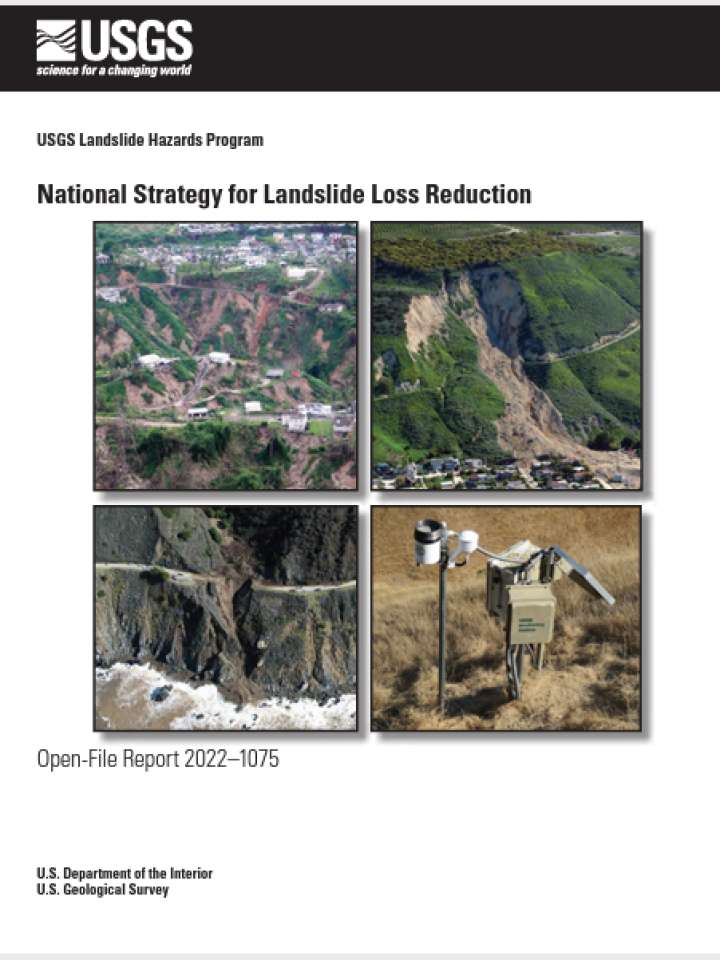USA: National strategy for landslide loss reduction
This strategy document describes goals and strategic actions of a comprehensive strategy to meet key challenges to reducing the Nation’s risk from landslide hazards equitably and effectively. The document follows the direction of the National Landslide Preparedness Act (Public Law 116–323) by presenting a strategy for addressing landslide hazards, including risk reduction and response. The act directs the Department of the Interior to establish a program that will work with State, Tribal, and local governments as well as with academia, the private sector, community-based groups, and nonprofit organizations to identify landslide hazards and risk and improve communication, coordination, and emergency preparedness, with the objective of reducing landslide losses.
The major takeaway from this strategy underpins the need for more and better data and understanding as well as the means and capacity to deliver that information to people and organizations potentially at risk from landslides along four specific goals:
- Assess: Provide decision makers with detailed, nationwide information on landslide hazard and risk.
- Coordinate: Landslide hazard mitigation, preparedness, response, and recovery efforts are coordinated across Federal, State, Tribal, territorial, and local levels.
- Plan: Communities are prepared and plan for landslide hazards.
- Respond: Landslide surveillance, warnings, and responses to events are effective, efficient, equitable, cooperative, and data-driven to protect lives, property, infrastructure, and the environment
Explore further
